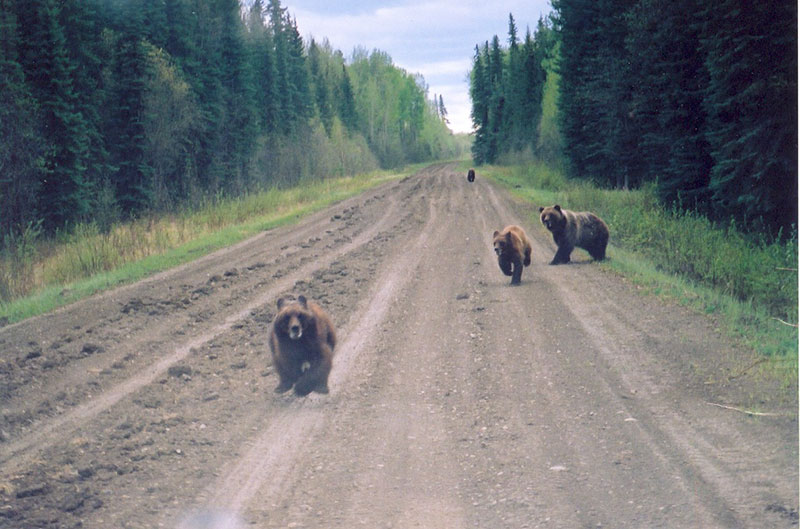
Abstract
The growing human footprint has placed unprecedented stressors on ecosystems in recent decades resulting in losses of biodiversity and ecosystem function around the world. Roads are influential through their direct footprint and facilitating human access; however, their influence can be mitigated. Here, we review the scientific literature on the relationship between grizzly bears (Ursus arctos), human motorized access, and the efficacy of motorized access control as a tool to benefit grizzly bear conservation in western Canada. We found that motorized access affected grizzly bears at the individual and population levels through effects on bears’ habitat use, home range selection, movements, population fragmentation, survival, and reproductive rates that ultimately were reflected in population density, trend, and conservation status. Motorized access management was effective in mitigating these effects. Our review of the scientific literature suggests that industrial road management would be a useful tool if (a) roads exist in high-quality grizzly bear habitats with population-energy-rich food resources; (b) open road densities exceed 0.6 km/km2; (c) less than at least 60% of the unit’s area is >500 m from an open road in patch sizes of ≥10 km2. Motorized access management would be most beneficial in threatened populations, in areas where roads occur in the highest quality habitats, within and adjacent to identified linkage areas between population units, and in areas that are expected to exceed motorized route thresholds as a result of resource extraction activities. Evidence suggests benefits of motorized access management are more likely to be realized if habitat quality is integrated and is best if managed at scales that optimize the benefit of distribution, survival, reproduction, and density of female grizzly bears. We encourage land use managers developing access rules to consider a wider spectrum of biodiversity and overall habitat conservation, and suggest landscape road targets that will benefit bear conservation.
Read the full paper here.
Citation
Proctor, M. F., McLellan, B. N., Stenhouse, G. B., Mowat, G., Lamb, C. T., & Boyce, M. S. (2020). Effects of roads and motorized human access on grizzly bear populations in British Columbia and Alberta, Canada. Ursus, 2019(30e2), 16-39. doi:10.2192/URSUS-D-18-00016.2






